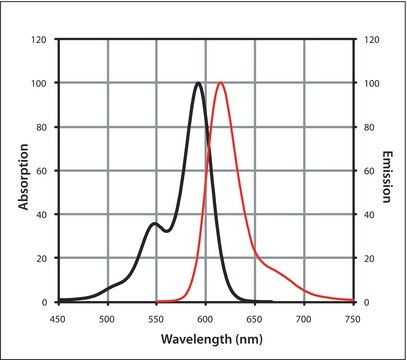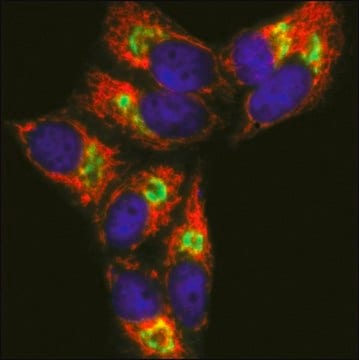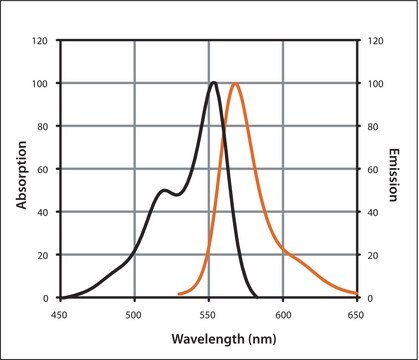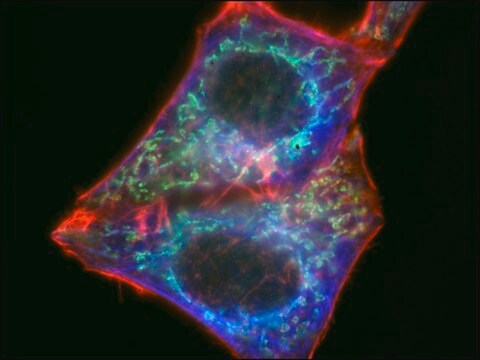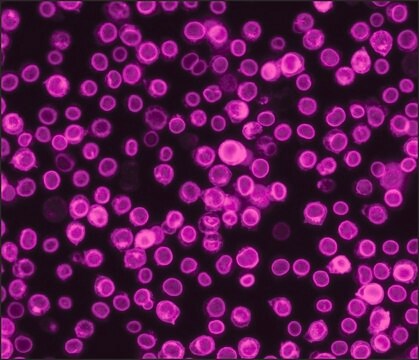SAB4600127
Anti-Chicken IgY (H+L), highly cross-adsorbed, CF™ 633 antibody produced in donkey
~2 mg/mL, affinity isolated antibody
About This Item
Productos recomendados
biological source
donkey
Quality Level
conjugate
CF™ 633 conjugate
antibody form
affinity isolated antibody
antibody product type
secondary antibodies
clone
polyclonal
form
buffered aqueous solution
species reactivity
chicken
concentration
~2 mg/mL
technique(s)
flow cytometry: 1-10 μg/mL
immunocytochemistry: suitable
immunohistochemistry: suitable
indirect immunofluorescence: 1-10 μg/mL
fluorescence
λex 630 nm; λem 650 nm
shipped in
dry ice
storage temp.
−20°C
target post-translational modification
unmodified
General description
CF™ dyes are a series of highly water-soluble fluorescent dyes, with wavelength extended over the visible and near-infrared (IR) spectrum for labelling biomolecules, mainly proteins and nucleic acids. Primary structure of the CF™ dyes is either cyanine dyes or rhodamine dyes. CF™ 633 produce the brightest antibody conjugates among spectrally similar dyes when excited by the 633nm He-Ne laser or the 635nm red diode laser. The most important advantage of CF™ 633 is its excellent photostability. Molecular weight of CF™ 633 is ~820 and its absorption/emission maxima is at 630/650nm.
Specificity
Immunogen
Application
Features and Benefits
Physical form
Preparation Note
Legal Information
Disclaimer
¿No encuentra el producto adecuado?
Pruebe nuestro Herramienta de selección de productos.
Storage Class
10 - Combustible liquids
wgk_germany
WGK 2
flash_point_f
Not applicable
flash_point_c
Not applicable
Certificados de análisis (COA)
Busque Certificados de análisis (COA) introduciendo el número de lote del producto. Los números de lote se encuentran en la etiqueta del producto después de las palabras «Lot» o «Batch»
¿Ya tiene este producto?
Encuentre la documentación para los productos que ha comprado recientemente en la Biblioteca de documentos.
Nuestro equipo de científicos tiene experiencia en todas las áreas de investigación: Ciencias de la vida, Ciencia de los materiales, Síntesis química, Cromatografía, Analítica y muchas otras.
Póngase en contacto con el Servicio técnico